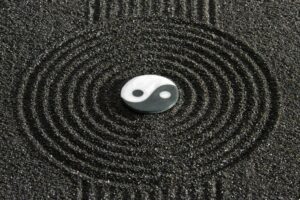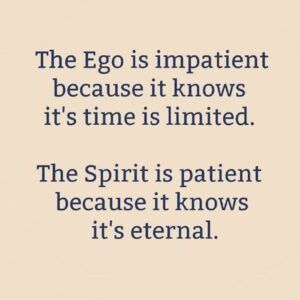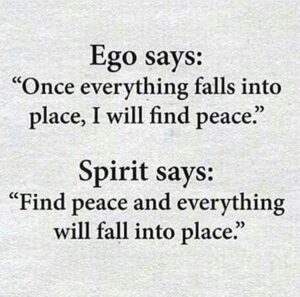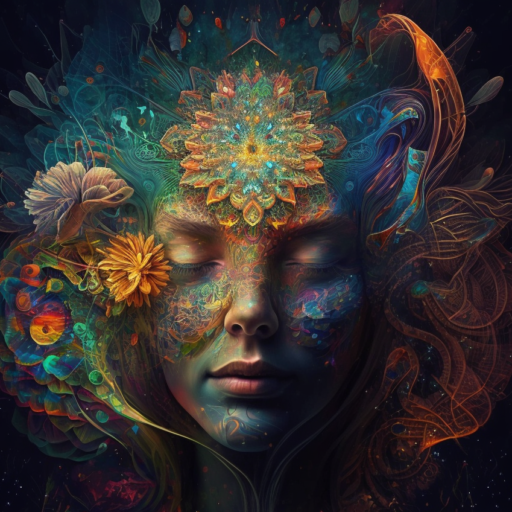Alchemy is the concept that draws upon ancient spiritual traditions and modern psychology to describe the process of transforming negative emotions into positive ones. It is a blending or simmering of all parts of the self to reUnite into one harmonious whole.
While different sources may describe alchemy in various ways, emotional or spiritual alchemy generally occurs in seven stages:

1. Calcination (Self-Awareness): The first stage involves becoming aware of your emotions without judgment or resistance to break down false CONstructs (ego) of the self. Through objectivity and non-reaction, you can simply observe and accept the presence of negative emotions without trying to suppress or avoid them.
2. Dissolution (Acceptance): Once you are aware of your emotions, practice accepting them as a natural part of the human experience. Embrace your emotions with compassion and understanding, recognizing that they serve as valuable messengers that can guide you towards healing and growth. Any negative emotions rooted in unconscious conditioning will naturally transmute itself through acceptance rather than resistance.
3. Separation (Understanding): Delve deeper into the underlying causes and triggers of your emotions. Explore the thoughts, beliefs, and past experiences that may be contributing to your current emotional state. Seek to understand the root causes of your emotions to facilitate greater self-awareness and insight.
4. Conjunction (Release): Release and let go of negative emotions that no longer serve you. Practice techniques such as mindfulness, deep breathing, or expressive writing to release pent-up emotions and tension from the body and mind.
5. Fermentation (Transformation): Transform negative emotions into positive ones through intentional reframing and perspective shifting. Look for silver linings, lessons, or opportunities for growth within challenging situations. Cultivate gratitude, optimism, and resilience to foster a more positive outlook on life.

6. Distillation (Integration): Integrate the lessons and insights gained from your emotional experiences into your daily life. Apply newfound wisdom and understanding to navigate future challenges with greater clarity, grace, and emotional intelligence.
7. Coagulation (Transcendence): Transcendence involves rising above the limitations of ego and embracing a higher state of consciousness. Recognize that you are more than your emotions and thoughts, and connect with your true essence or spiritual nature. Cultivate a sense of inner peace, wholeness, and interconnectedness with all beings.
It’s important to note that emotional alchemy is a journey rather than a linear process, and individuals may move through the stages at their own pace. Additionally, the stages of emotional alchemy may overlap or occur simultaneously, and the process may require ongoing refinement and integration over time.
To gain a deeper understanding, lets take a closer look at the differences between ego and spirit:
The Polarity of Ego and Spirit
The polarity of ego and spirit refers to the contrast between the two aspects of human consciousness: the ego, which is associated with individual identity, worldly concerns, and self-preservation; and the spirit, which is associated with interconnectedness, transcendence, and higher consciousness.

Ego
Individual Identity: The ego is primarily concerned with defining and asserting individual identity, including aspects such as personality, beliefs, and desires.-
Separation: The ego tends to perceive itself as separate from others and the world, leading to feelings of isolation, competition, and conflict.
Worldly Concerns: The ego is preoccupied with worldly concerns such as survival, success, status, and validation. It seeks to fulfill personal desires and needs.
The ego is a complex psychological concept that refers to a person’s sense of self-identity, self-esteem, and self-importance. It encompasses the conscious and unconscious beliefs, thoughts, and emotions that shape how individuals perceive themselves and interact with the world around them.
In psychological terms, ego is one of the three components of Sigmund Freud’s structural model of the psyche, along with the id and superego. Freud defined the ego as the part of the psyche that mediates between the demands of the id (instinctual drives and desires) and the constraints of the superego (internalized moral standards and societal norms).
The ego operates based on the reality principle, seeking to satisfy the id’s desires in ways that are socially acceptable and realistic. In everyday language, ego is often used to describe a person’s sense of self-importance, pride, or arrogance.
When someone is said to have a “big ego,” it typically implies that they have an inflated sense of self and may exhibit traits such as vanity, narcissism, or entitlement.
However, ego can also have positive aspects, such as healthy self-esteem, confidence, and a strong sense of identity. It plays a crucial role in helping individuals navigate the world, establish boundaries, and assert their needs and desires.
Ultimately, ego is a multifaceted concept that encompasses both positive and negative aspects of the self. Understanding and managing one’s ego is an important aspect of personal growth, self-awareness, and interpersonal relationships.

Spirit
Interconnectedness: The spirit recognizes the interconnectedness of all beings and the unity of existence. It perceives a sense of oneness and interconnectedness with others, nature, and the universe.
Transcendence: The spirit transcends the limitations of the individual ego, accessing higher states of consciousness and awareness beyond the realm of personal identity.
Higher Purpose: The spirit is aligned with higher values, purpose, and meaning beyond individual desires and concerns. It seeks to serve the greater good and contribute to the evolution of consciousness.
Overall, the concept of spirit is multifaceted and can encompass various meanings depending on cultural, philosophical, and spiritual beliefs. It often conveys a sense of vitality, purpose, and connection to the larger cosmos.
Spirit as a ‘metaphysical concept’. In a metaphysical context, spirit refers to the non-physical essence or life force that animates living beings. It is associated with consciousness, vitality, and the higher self. In some belief systems, spirit is believed to transcend the physical realm and connect individuals to a higher power or divine source.
Spirit as the essence of a person. In a more personal sense, spirit can refer to the inner essence or core identity of an individual. It encompasses qualities such as passion, creativity, resilience, and authenticity. Nurturing one’s spirit involves cultivating a sense of purpose, meaning, and connection to something greater than oneself.
Spirit as Energy or Vibration: In holistic and/or New Age perspectives, spirit is often viewed as a form of energy or vibration that permeates the universe. It is associated with concepts such as consciousness, intuition, and interconnectedness. Practices such as meditation, yoga, and energy healing aim to balance and harmonize the spirit to promote health and well-being.
Spirit as the Human Soul. In religious traditions, spirit is sometimes equated with the human soul or immortal aspect of the self that persists beyond physical death. It is believed to embody qualities such as morality, free will, and the capacity for spiritual growth and enlightenment.

While the ego and spirit represent opposite poles of human consciousness, they are both essential aspects of the human experience. The challenge lies in finding a balance between the two and integrating them harmoniously to navigate life with authenticity, integrity, and inner peace.
Rather than viewing ego and spirit as adversaries, it is possible to recognize their complementary roles and work towards their alignment and integration. By cultivating self-awareness, mindfulness, and spiritual practices, individuals can transcend egoic limitations and align with the wisdom and guidance of their spiritual essence.
How Do You Integrate Ego and Spirit?
Integrating ego and spirit involves cultivating a harmonious balance between the practical aspects of the ego (such as identity, self-esteem, and worldly concerns) and the transcendent qualities of the spirit (such as connection, purpose, and higher consciousness). Here are some ways to integrate ego and spirit:
1. Self-Awareness: Develop self-awareness to understand the workings of your ego, including its desires, fears, and defense mechanisms. Similarly, cultivate awareness of your spiritual essence, connecting to the deeper aspects of yourself beyond ego identification.
2. Embrace Both Aspects: Acknowledge and honor both your ego and your spirit as integral parts of your being. Recognize that the ego serves practical functions in navigating the world, while the spirit provides deeper meaning and connection to the transcendent.
3. Align with Higher Values: Seek to align your ego-driven actions and decisions with higher values and spiritual principles. Let your actions be guided by compassion, integrity, and authenticity rather than egoic desires for power, status, or validation.
4. Practice Detachment: Cultivate a sense of detachment from egoic attachments and identifications. Recognize that your true essence transcends ego-based identities and possessions, allowing you to experience greater freedom and inner peace.
5. Live Mindfully: Practice mindfulness to observe your thoughts, emotions, and behaviors without attachment or judgment. By cultivating present-moment awareness, you can disidentify from egoic patterns and connect more deeply with your spiritual essence.
 6. Practice Gratitude: Cultivate gratitude for the gifts and experiences of life, recognizing them as manifestations of the divine. Gratitude helps shift your focus from egoic desires for more to appreciation for what you already have, fostering a deeper sense of fulfillment and abundance.
6. Practice Gratitude: Cultivate gratitude for the gifts and experiences of life, recognizing them as manifestations of the divine. Gratitude helps shift your focus from egoic desires for more to appreciation for what you already have, fostering a deeper sense of fulfillment and abundance.
7. Serve Others: Engage in acts of service and compassion to connect with the larger community and contribute to the well-being of others. Serving others with humility and compassion helps transcend egoic concerns and fosters a sense of interconnectedness and purpose.
8. Seek Inner Alignment: Strive for inner alignment between your ego and spirit, where your actions, intentions, and values are in harmony with your deepest truth and highest potential. This alignment allows you to live authentically and in accordance with your spiritual essence.

Integrating ego and spirit, you can cultivate a balanced and holistic approach to life, navigating the practical realities of the world while staying connected to your deeper purpose and essence.
If this article was helpful, I’d love to receive your feedback, questions or insights…
How do you practice emotional alchemy in your daily life?



Thank you. A beautiful read. Well articulated. Resonates well. A positive mindset of the yins and yangs. Where there’s harmony there’s love.
Blessings 💞
Thank you so much for your kind words 💖. Absolutely, embracing both yin and yang is essential to aligning with harmony and love — as within so without. I’m happy to know this article resonates well with you. Your appreciation means a lot 🙏🏽. Wishing you abundant blessings on your journey 🤍💫.